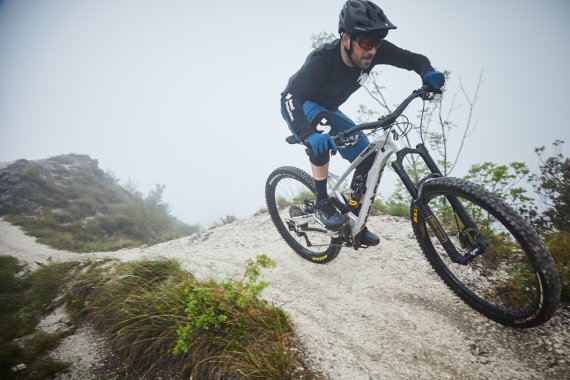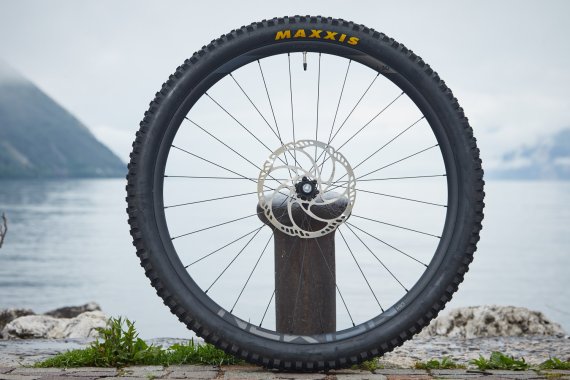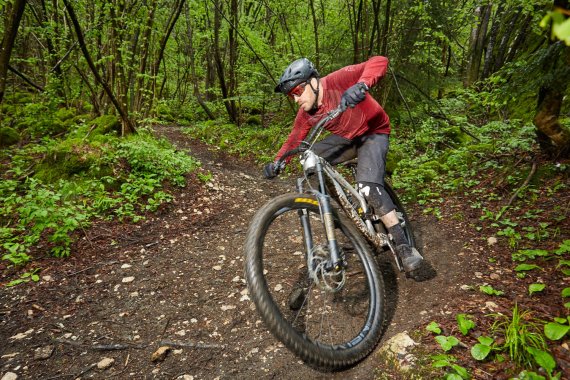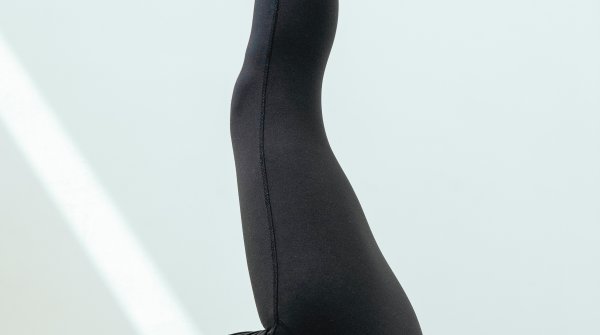
The idea of riding a large wheel at the front and a smaller one at the rear comes from motorcross and is now increasingly gaining acceptance in the MTB segment.Even in the UCI Downhill World Cup, more and more pilots ride with 29 inches at the front and 27.5 at the rear. Good time for us to find out the pros and cons of this design in a self-experiment.
To convert a mountain bike 27 5 inch, you need the following components:
- A 29er fork with 44 mm or 51mm offset and in our case 160mm stroke.
- A frame whose geometry is designed for the higher front height (the 29er fork is about 2 cm higher than comparable 27.5 forks)
- A 29er wheel with appropriate tires.
The North German cult bike forge Alutech, under bike pioneer Jürgen Schlender, is (still) one of the few brands that offer such a bike under the name "Love or Hate" as a complete bike.
Therefore, it was obvious for us to implement this test with a custom version of the new enduro Fanes 6.0. The company Newman of ex-Liteville boss Michael Grätz supported our project with the appropriate wheels (Evolution A.30), because unlike many other manufacturers, Newman sells both individual wheels and sets with different diameters. The Scandinavian suspension specialists from Oehlins equipped us for the test with the new 29er fork RXF 36 Evo.

Due to the higher overall height of the fork and the larger diameter of the wheels, the front moves up and the geometry (i.e. the steering and seat angle) becomes flatter. In our case, about 1 degree flatter than the mountain bike 27 5 inches. Thus, the bottom bracket also increases by about one centimeter.
After the promenade shooting, we got down to business on the soaked Naranch Trail above Torbole: In addition to flowing trail sections, there are also rough Rockgarden passages here, where we could get a first impression of the Fanes "love or hate".
Uphill, the flatter steering and seat angle of the Mullet mountain bike causes a slightly more sluggish uphill behavior, but without affecting the propulsion too much. In trail sections where climbs and descents meet in rapid alternation (e.g. on the Isartrails in Munich), this difference is most noticeable. Here everyone must decide for themselves whether the time is the opponent (then we recommend rather a light AM or XC 29er bike), or whether rather the way is the goal.

The Mullet bike definitely plays out its advantages on the downhill: Due to the large front wheel, the flatter geometry and the associated better rollover behavior, you master the steepest root carpets and scree fields much more confidently. The larger contact area of the 29er tire brings a plus in traction. Overall, you get the feeling of riding a 29er.
But unlike the 29er bike, where you simply aim for a point at the end of the key downhill section and hold on (point and shoot), the nimble smaller rear wheel on the "love or hate" allows for a much more agile downhill performance with the option of quick direction changes and gimmicks, like a Scandinavian Flick. The Alutech ironed so confidently over all obstacles, meandered through winding switchbacks and left in flowing sections much euphoria in the pilot.
Honestly, after our two-day test, we had few arguments on hand that would speak against a hybrid setup in an enduro.
Since the Newmann AL 30 SL wheels are very light for an aluminum wheel and at the same time have a high lateral stiffness, the additional weight of the front wheel and the associated higher inertia is kept within limits, which positively affects the uphill performance.

Impressive overall picture, characterized by excellent downhill handling characteristics compared to the classic 27.5 bike. Gravity bikers are happy to accept the slight sacrifice in uphill performance. Propulsion-hungry altitude meter collectors find more efficient climbing properties with the same wheel size front and rear.
Compared to the 29er Enduro, the Mullet bike is much more agile and has - due to the smaller wheel at the rear - a better transmission on steep uphill ramps.
Who has converted his bike with a 29er fork, can switch through an additional front wheel (in 27.5) at any time from hybrid to classic 27.5 and thus choose the optimum for himself depending on the planned route. Provided the frame geometry and the bike manufacturer allow this.
Below we answer frequently asked questions related to Mullet Bikes.
A Mullet combines two wheel sizes, namely a 29 inch wheel on the front and a 27.5 inch wheel on the rear.
Due to the size, 29-inch bikes have better traction, the longer wheelbase ensures a smoother ride and obstacles (e.g. potholes) are overcome more easily. Due to the higher weight, bikers have to cut back on maneuverability.
- ISPO awards
- Mountain sports
- Bike
- Design
- Retail
- Fitness
- Health
- ISPO Job Market
- ISPO Munich
- ISPO Shanghai
- Running
- Brands
- Sustainability
- Olympia
- OutDoor
- Promotion
- Sports Business
- ISPO Textrends
- Triathlon
- Water sports
- Winter sports
- eSports
- SportsTech
- OutDoor by ISPO
- Heroes
- Transformation
- Sport Fashion
- Urban Culture
- Challenges of a CEO
- Trade fairs
- Sports
- Find the Balance
- Product reviews
- Newsletter Exclusive Area
- Magazine




